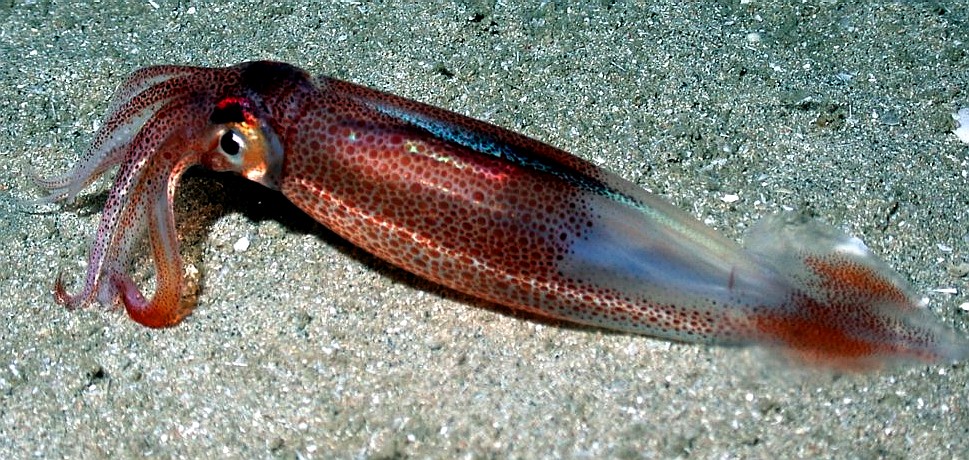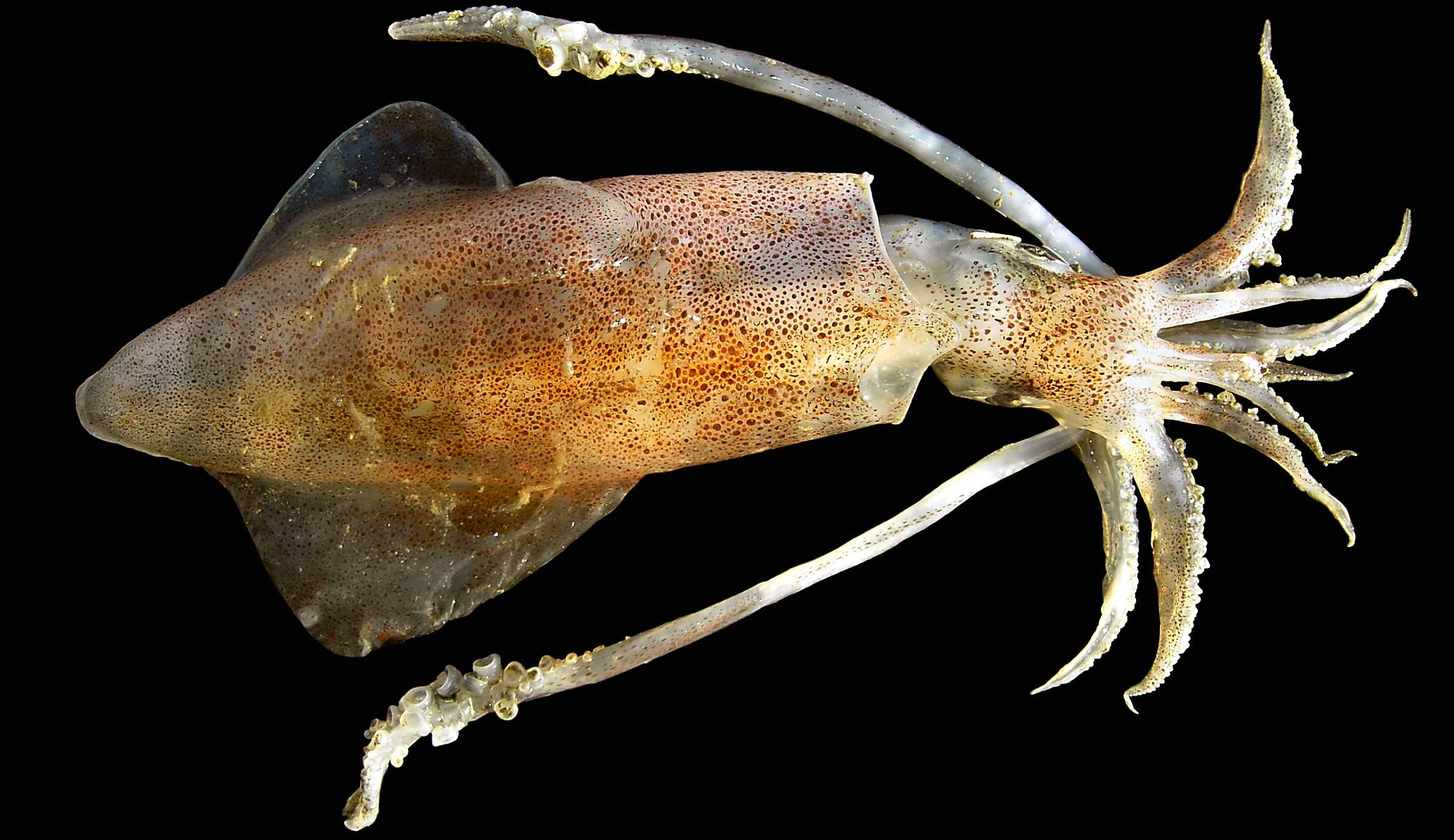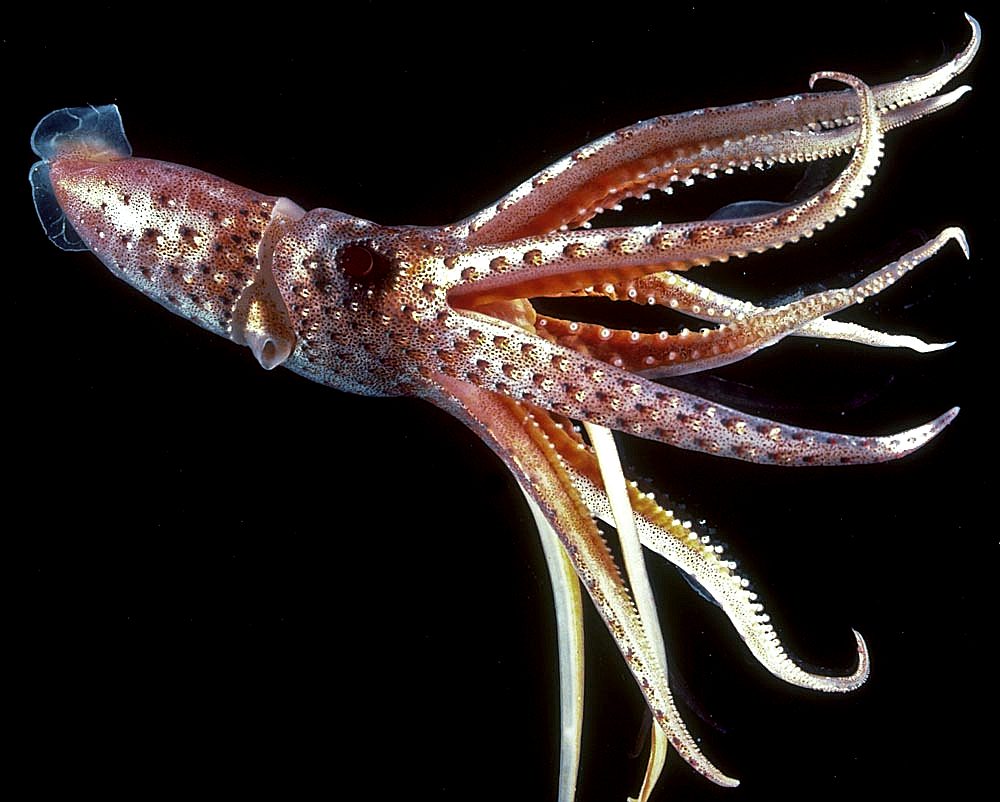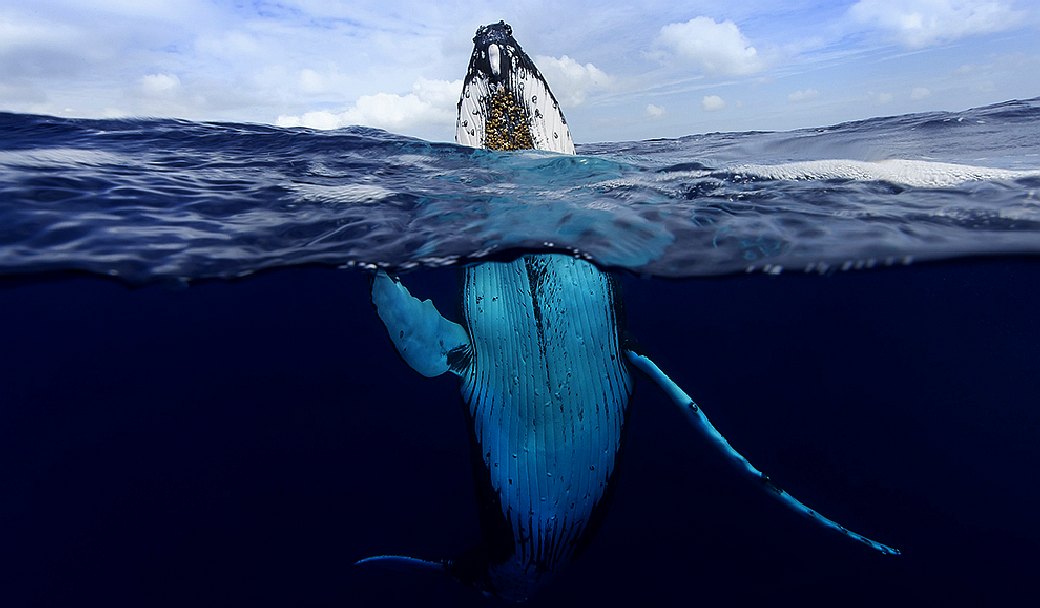|
SQUID
ABOUT - HOME - WHALING - A-Z INDEX
Anchovies
| Bass
| Bream
| Catfish
| Clams
| Cod
Coley
| Crabs
| Crayfish
| Eels
| Grouper
| Haddock
| Hake
| Halibut
| Herring
| Jellyfish
Krill
| Lobster
| Mackerel
| Marlin
| Monkfish
| Mullet
| Mussels
| Oysters
| Perch
| Piranha |
Plaice
| Pollock
| Prawns
| Rays
| Sablefish
| Salmon
Sardines
| Scallops
| Sharks
| Shrimp
| Skate
| Sole
| Sprat
| Squid
| Sturgeon
| Swordfish
| Trout
| Tuna
| Turbot
| Whiting

SQUID -
Not only popular with sperm whales, squid is eaten by humans,
as one of the ingredients to many delicious dishes.
In
an effort to feed a
growing population we should look at
alternatives lower down the food chain to increase the ratio
at which protein is harvested from the ocean, so bypassing the
conventional food chain where at each stage of consumption
there are significant losses in the conversion process. Squid could play a part in filling the widening gap between falling
fish stocks and higher demand to feed humans.
ABOUT
SQUID
Squid are cephalopods of the order Teuthida. They are the sister group to the octopods. Squid are carnivores and, in turn, they are hunted. The largest squid, the giant squid and colossal squid, are eaten by
sperm whales and sleeper
sharks.
Squid, like cuttlefish, have eight arms arranged in pairs, and two longer tentacles with suckers.
All squid have a mouth with a radula, and jet propulsion with the siphon from the mantle. The radulla is a scraping organ in the mouth that scrapes nutrients from food sources.
Tentacles are used for locomotive power and capturing food sources. All squids are carnivores; they eat other animals, not plants.
Like other cephalopoda, squid are intelligent animals. Squids have a head-like structure, with sense organs and brains in the front end. Although the squids lack exterior shells they have a vestigial shell inside, made of chitin.
The skin is covered in chromatophores, which enable the squid to change colour to suit its surroundings, making it effectively camouflaged. Controlled by the nervous system, the camouflage can change in 'real time'.
After a male and female mate, the female squid lays eggs. The eggs are laid inside an egg case. Since the squid is usually a part of a shoal, it is laid with many other egg cases from many other squids, and then anchored to the sea floor. Because of this, squid eggs are often (many times) found in clumps, and those clumps often look like a flower.
Often, the male will die a short time after mating, and the female will die once she has released her eggs. Because of this, squids usually lay eggs only once. Squids do not live very long. Although there are some long-lived species, most squids live for only one or two years.
Most squid are no more than 60 centimeters (24 in) long, although the giant squid may reach 13 metres (43 ft).
In 1978, sharp, curved claws on the suction cups of squid tentacles cut up the
rubber coating on the hull of the USS Stein. The size suggested the largest squid known at the time.
In February 2007, a New Zealand
fishing vessel caught a colossal squid weighing 495 kilograms (1,091 lb) and measuring around 10 metres (33 ft) off the coast of
Antarctica. This specimen is the largest invertebrate ever found. Squid have the largest eyes in the animal kingdom.
Giant squid are featured in literature and folklore with a frightening connotation. The Kraken is a legendary tentacled monster possibly based on sightings of real giant squid.

SQUID
AS FOOD
Squid or calamari is available most of the year fresh or frozen. It varies in size, from small specimens 5-7cm/2-3in in length, to larger ones of about 25cm/10in. Few shellfish fare so well when frozen.
PREPARATION
Preparing squid is easy once you know how: cut off the tentacles, then feel around on the inside of the squid's body for a long, plastic-like shard called the 'quill' and pull it out. Reserve the silvery ink-sac from the innards to colour the dish later. Peel the purple and white skin from the squid meat. Remove the 'beak' from the tentacles - it resembles a small white piece of bone with a hole in the middle. The tentacles and squid body can both be used in cooking.
Squid must either be cooked very quickly or for a very long time, otherwise it will be tough. Cooked properly, it will be sweet and tender. Simply grill whole squid quickly or slice it into rings, dip in batter and deep-fry. Larger squid can be stewed with tomatoes, red wine and olive oil. Squid is delicious stuffed, and can be used in paella.

LINKS
& REFERENCE
https://

MARINE
LIFE - This humpback whale is one example of a magnificent
animal that is at the mercy of human
activity. Humans are for the most part unaware of the harm their fast-lane
lifestyles are causing. We aim to change that by doing all we
can to promote ocean
literacy.
Anchovies
| Bass
| Bream
| Catfish
| Clams
| Cod
Coley
| Crabs
| Crayfish
| Eels
| Grouper
| Haddock
| Hake
| Halibut
| Herring
| Jellyfish
Krill
| Lobster
| Mackerel
| Marlin
| Monkfish
| Mullet
| Mussels
| Oysters
| Perch
| Piranha |
Plaice
| Pollock
| Prawns
| Rays
| Sablefish
| Salmon
Sardines
| Scallops
| Sharks
| Shrimp
| Skate
| Sole
| Sprat
| Squid
| Sturgeon
| Swordfish
| Trout
| Tuna
| Turbot
| Whiting
This
website is provided on a free basis as a public information
service. Copyright © Cleaner
Oceans Foundation Ltd (COFL) (Company No: 4674774)
2022. Solar
Studios, BN271RF, United Kingdom.
COFL
is a charity without share capital.
|



